Winner of the 2022 WLA Student Awards – Merit Award in the Concept – Design category
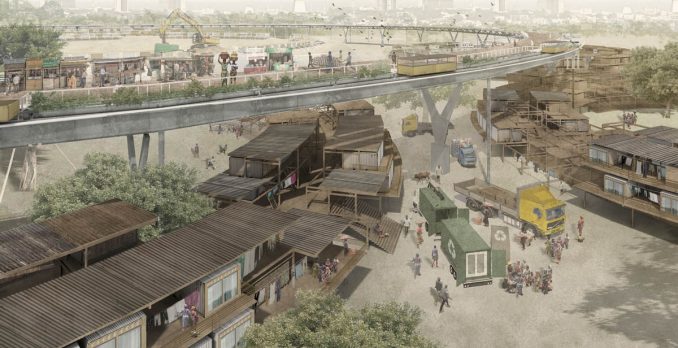
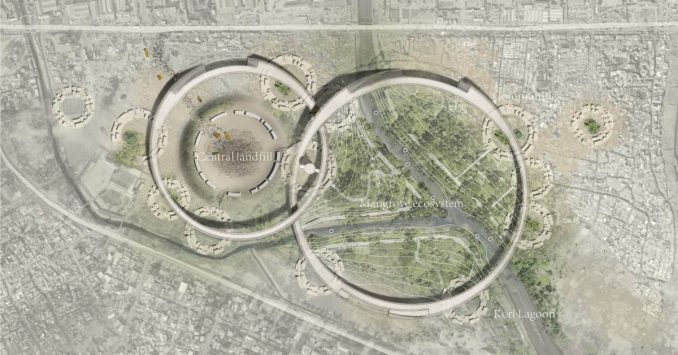
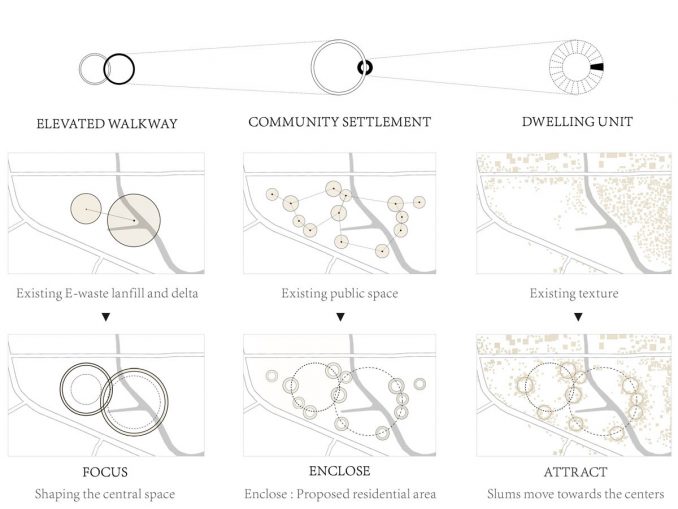
“Accra” comes from the Akan language “nkran”, which means “a group of ants”. The name “Nkran” comes from thousands of ant mounds distributed on the Accra plain. Agbogloshie, where the site is located, is the largest e-waste landfill in Accra, Ghana. This project aims to restore the local mangrove ecology and reshapes the memories of local residents by changing the e-waste dealing manners from the problems of housing, ecology and electronic pollution.
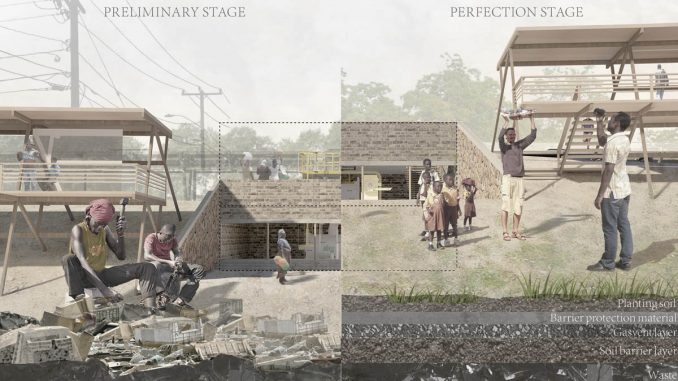
In 2000s, developed countries regarded Ghana as a dumping ground for their e-waste. Now e-waste incineration prevailed in this area, the waste is burned by the residents, which is the main source of income for them.Facing the impact of modern civilization, the original mangrove ecology on the site has been seriously damaged, and residents have problems such as self loss and lack of communication. Agbogblochie is located along the coast of Korle lagoon. It is divided into three main areas by the water system of the Lagoon: wasteland, e-waste disposal area and illegal settlement. Each region has its own operating system. Like ants on the earth, local residents live with piles of e-waste every day. The project starts with three main problems: living environment, mangrove ecology and e waste pollution, and takes the form of LOOP as a way to solve the existing problems of the site.
The two elevated loop-lines enclose two main areas focusing on e-waste treatment and ecological restoration. The elevated loop connection also contains a range of spaces such as a plant cultivation unit, delivery system, pipeline system, etc., which are connected in series. While providing infrastructure for local residents, it can also be used as a place for walking and recreation.
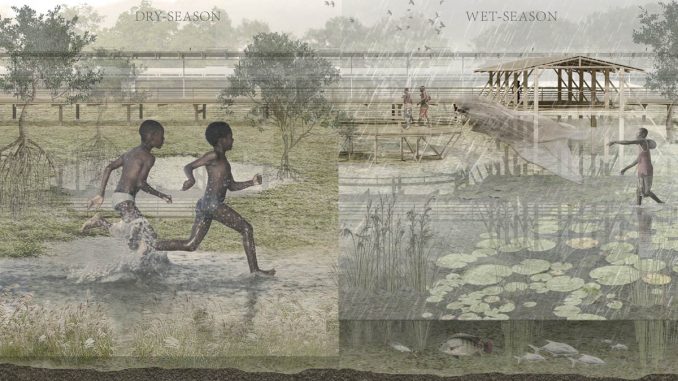
With the assistance of local governments and relevant institutions, a mature industry model combining e-waste treatment and ecological restoration has gradually formed. In this framework, small circular residential units and corresponding public spaces are generated. In addition, in the process of rebuilding their homeland, the residents also establish self-identity and the perception of this place through public participation. The spatial generation model centered on the loop-lines and the theme of memory-retracing constitute the e-waste development model.
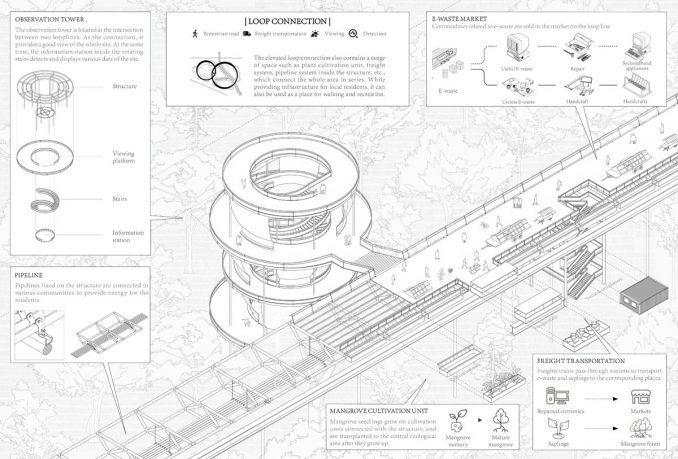
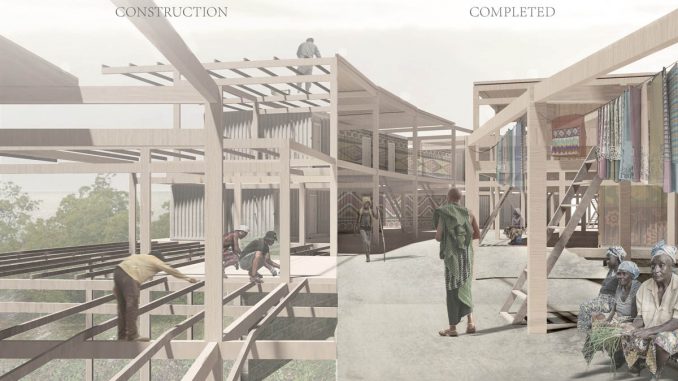
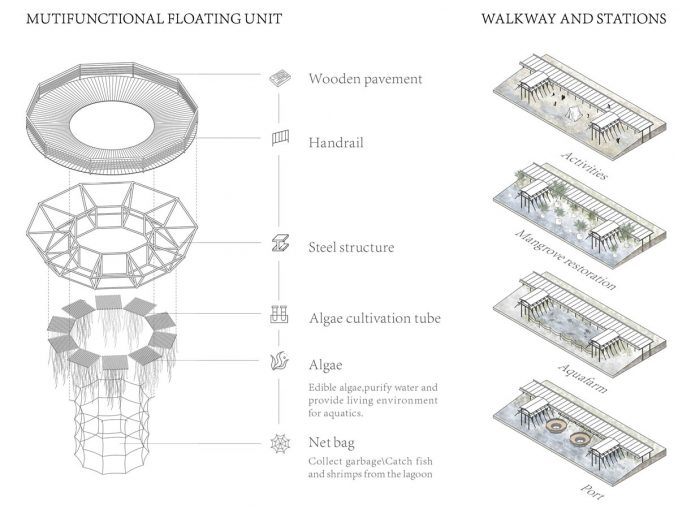
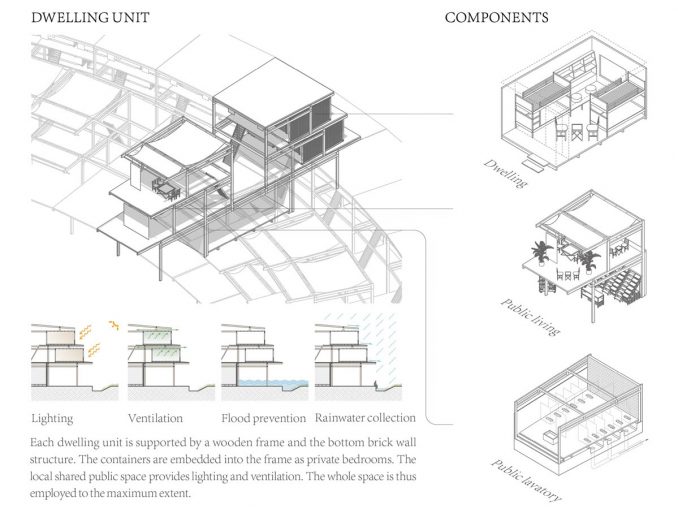
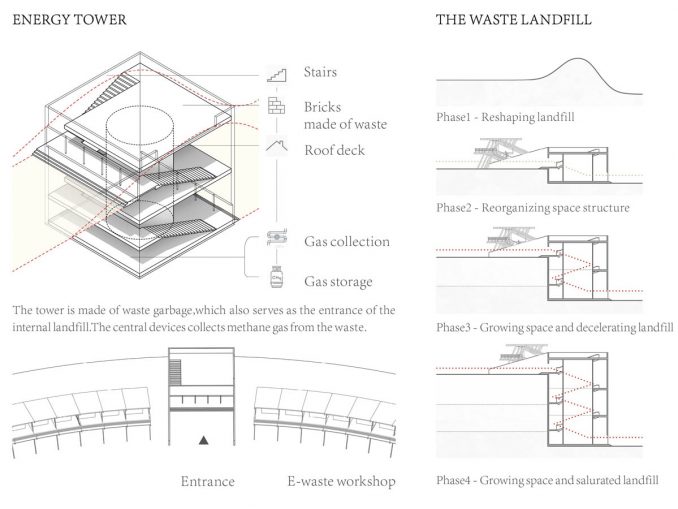
PROJECT CREDITS:
Student name: Chen Yifan,
University: Central Academy of Fine Arts
